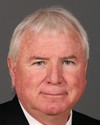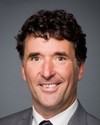We were all aware through 2006. The reason we did the 2005 arrangement was because we wanted to be sure that we were avoiding, to the extent possible, any threat of mistreatment.
Our understanding of the situation on the ground in Afghanistan grew month by month. Certainly through 2006 people were looking at whether we could work in Afghan prisons and how we'd do it in terms of capacity building. We were working with the AIHRC and the Red Cross to see what they could do. DFAIT and National Defence were working to see how they would divide up the responsibility for this process.
The work picked up speed tremendously in 2007. We understood more. We developed new processes. What we would do is we'd get everybody in a single room. Sometimes this would take all weekend. We'd go through every part of the process. We'd look people in the eye and say, “Do you understand this? Do we have the right understanding of this? Is this how we should move forward?”
We would have Kabul and Kandahar on the line. When I say Kandahar, I mean we'd have civilians with the PRT, we'd have the commander or the deputy commander of Joint Task Force Afghanistan, and we might have some of the other units that were involved in capturing detainees, as well as people from the Judge Advocate General.
We went through this in painstaking detail because we had to figure things out. Is this acceptable to the RCMP? Have we met their standards? Is the Correctional Service of Canada in line with this? Can the Correctional Service of Canada and DFAIT develop a single template that will allow us, visit after visit, to ask the same detailed questions? How do we report this responsibly in the system?
We crunched this in a period from March through April 2007 because we wanted to get a better arrangement and put it in place.



